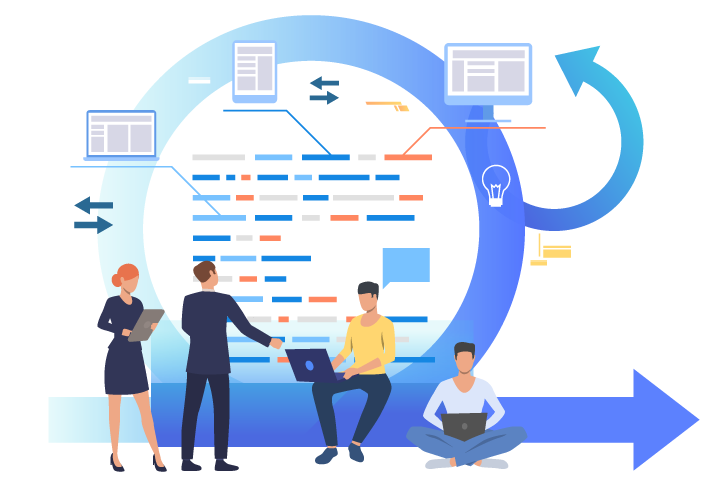
How Scrum Master can help in Agile software development
If you’re new to the concept of agile software development, you’d have heard a lot about scrum master from your clients. They would always want you to include a scrum master into the project team. So, who’s a scrum master? Well, a scrum master is the key facilitator for an agile software development team. The scrum master manages the complete process for how information is exchanged during an agile software development life cycle.

What does a Scrum Master do?
The Scrum Master is responsible for removing anything that obstructs a team’s pursuit of its sprint goals. In case the developers don’t have a sense of what everyone’s doing, the Scrum Master helps them set up a physical task-board and shows the team how to use it. In case the team has not learned how to develop a potentially shippable product increment every Sprint, the Scrum Master helps them Test Driven Development (TDD). In short, the scrum master ensures that the project development process is as streamlined and as seamless as possible.
Importance of having a Scrum Master
While you might confuse the tag master as the in-charge of the project or the development team, the reality is completely different. Instead, a Scrum master works in-sync with the product owner and the Scrum team to refine and enhance processes where it makes sense. Additionally, Scrum Masters are responsible for seeing that the team works as effectively and efficiently as possible while keeping the Product Owner’s vision on top of mind.

Scrum Masters operate in the moment, focusing on what can be accomplished in the current sprint. They are focussed on maximizing efficiencies and rolling out the product feature set within the designated time frame. As a result, they encourage the team through daily standup meetings, remove obstructions in their workflows, and work closely with the Product Owner to keep the product backlog in shape for each sprint.
For a Successful Agile Implementation – Hire Certified Scrum Master
Key Areas where Scrum Master helps in Agile software development
A Scrum master’s list of roles include, but are not limited to, the following responsibilities.
Lend a Helping Hand to Team Members
First things first, a scrum master’s key role is to ensure all the team members are well trained and equipped with agile software development processes. The scrum master works closely with each of the team members to make sure that they know their respective roles precisely. The scrum master ensures that all the team members have a sense of project ownership, the processes that are followed, and that teams are self-managed. The idea is to drive each team member on the same page so that there isn’t any kind of miscommunication.
Leading the Daily Standups
Daily standup is really critical to know what’s happening around in the team. It sets the tone for the day. The goal is to have an answer to a few questions before the team starts working for the day.
- What did you do yesterday?
- What will you do today?
- What is impeding your progress?
The scrum master asks for a timeline for a particular task from each member, keeps a track on the progress of all these tasks, and tries to help in case of obstacles that may keep the team from completing tasks.
The Scrum master makes sure that all team members, including those who work remotely, attend and participate in the daily meeting. And also that the meeting stays focused and ends on time.
Also read – Your Guide To Agile Software Development Life Cycle
Maintaining the Product backlog
Many of you might argue that ideally creating and maintaining the product backlog is a product owner’s responsibility. Yes, it is. But the scrum master works closely with the product owner to help him out with refining the backlog. The scrum master does it using the information he gathers from the daily stand-up meetings.
Eliminate Roadblocks
I think this is one of the most important responsibilities of a scrum master. He helps the team stay focused on the tasks that need to be done during each iteration.He further looks for distractions and roadblocks that can obstruct progress.
For example, if a team member has been assigned tasks on multiple teams, the Scrum master works with product owners and other stakeholders to redistribute the workload.





